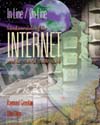In its second edition, Inline/Online: Fundamentals of the Internet and the World Wide Web continues to offer students an entertaining and pedagogically superior introduction to the Internet, Web Design, and HTML coding in textbook format. This new edition features enhanced coverage of FTP, discussion of a wider array of search engines, new material on cascading style sheets, and an expanded and up-to-the-minute presentation of the current state of e-commerce. Outside of the classroom, this book remains an excellent resource for anyone who is interested in recent computing developments, online information, and the Internet as the new social and economic frontier. Inline/Online distinguishes itself as a text by offering an in-depth treatment of the Internet for non-computer specialists, thus making it accessible to students from all majors. E-mail, Newsgroups/Mailing Lists, web programming, electronic publishing, and search engines are among the topics author Ray Greenlaw covers with flair and a sense of their relationship to real-world applications. Students begin by learning the basics of e-mail and by the end have the skills to publish their own well-designed web pages. In addition, the book contains over 500 exercises, many of them new to the second edition, which allow the reader test and refine their new skills online. Technology:
The Online Learning Center that accompanies In-line/On-line can be customized to fit each instructor's course through McGraw-Hill's PageOut, complementary with every adoption. Syllabus, assignments, grading information, and projects can all be tailored to individual classes. The Online Learning Center also serves as a rich source of information by providing students with examples of HTML programming, tips for finding material online, examples and screen shots from the book, and relevant links (carefully maintained) for every chapter. |



 2002 McGraw-Hill Higher Education
2002 McGraw-Hill Higher Education